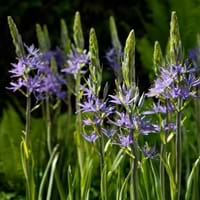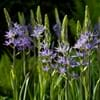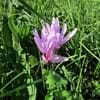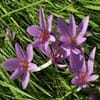Life Span
Perennial
Perennial
Type
Bulb or Corm or Tuber
Tree
Origin
Western United States, Northwestern United States, California, Canada
North America, United States, Northeastern United States, Mid-Atlantic United States, Southeastern United States, North-Central United States, Central United States, South-Central United States, Canada
Types
Quamash
Autumn Flame, October Brilliance, Tiliford
Habitat
Not Available
Forests, Wide range of ecological site
USDA Hardiness Zone
3-8
3-9
Sunset Zone
21,22
A2, A3, 1a, 1b, 2a, 2b, 3a, 3b, 4, 5, 6, 7, 8, 9, 14, 15, 16, 17
Habit
Upright/Erect
Oval or Rounded
Minimum Height
Not Available
Minimum Width
Not Available
Flower Color
Blue, Dark Blue
Red
Flower Color Modifier
Bicolor
Bicolor
Fruit Color
Brown
Red, Green, Brown
Leaf Color in Spring
Green, Ivory
Light Green
Leaf Color in Summer
Light Green
Green, Dark Green
Leaf Color in Fall
Several shades of Green
Yellow, Red, Orange, Yellow green, Gold, Dark Red, Orange Red
Leaf Color in Winter
Light Green
Not Available
Leaf Shape
Long linear and narrow
Maple shaped
Plant Season
Spring, Summer
Spring, Summer, Fall
Sunlight
Full Sun, Partial Sun
Full Sun, Partial Sun
Growth Rate
Medium
Medium
Type of Soil
Loam
Clay, Loam, Sand
The pH of Soil
Acidic, Neutral, Alkaline
Acidic, Neutral, Alkaline
Soil Drainage
Well drained
Average
Bloom Time
Late Spring, Early Summer
Early Spring, Spring
Tolerances
Drought
Wet Site, Soil Compaction
Where to Plant?
Container, Ground
Ground
How to Plant?
From bulbs, Seedlings
Seedlings, Vegetative Reproduction
Plant Maintenance
Medium
Medium
Watering Requirements
Do not water frequently, Does not require lot of watering, Requires regular watering, Requires watering in the growing season
Water Deeply, Water when top layer of soil becomes dry
In Summer
Lots of watering
Lots of watering
In Spring
Moderate
Moderate
In Winter
Average Water
Average Water
Soil pH
Acidic, Neutral, Alkaline
Acidic, Neutral, Alkaline
Soil Type
Loam
Clay, Loam, Sand
Soil Drainage Capacity
Well drained
Average
Sun Exposure
Full Sun, Partial Sun
Full Sun, Partial Sun
Pruning
Remove dead leaves, Remove dead or diseased plant parts
Remove dead branches, Remove dead leaves
Fertilizers
All-Purpose Liquid Fertilizer
General garden fertilizer, No need to fertilize every year
Pests and Diseases
Red blotch
Anthracnose, Bleeding canker, Decline, Fomes root rot, Ganoderma root rot, Laetiporus root rot, Leaf spot, Powdery mildew, Tar spot, Verticillium Wilt
Plant Tolerance
Drought
Soil Compaction, Wet Site
Flowers
Showy
Insignificant
Flower Petal Number
Single
Single
Foliage Texture
Medium
Medium
Foliage Sheen
Matte
Matte
Attracts
Flying insects
Not Available
Allergy
Asthma
breathing problems, Eczema, flushing of face, Hives, Low blood pressure, Oral cavity, Rapid Heartbeat, Runny nose, Watery eyes
Aesthetic Uses
Beautification, Landscape Designing, Showy Purposes
Showy Purposes
Beauty Benefits
Not Available
Not Available
Environmental Uses
Air purification
Air purification, Wildlife
Medicinal Uses
Not Available
Not Available
Part of Plant Used
Bulbs, Flowers, Leaves
Whole plant
Other Uses
Decoration Purposes, Showy Purposes, Used As Food, Used as Ornamental plant
Edible syrup, Used as Ornamental plant
Used As Indoor Plant
No
Yes
Used As Outdoor Plant
Yes
Yes
Garden Design
Foundation, Mixed Border, Rock Garden / Wall, Wildflower
Feature Plant, Shade Trees, Street Trees
Botanical Name
CAMASSIA quamash 'Blue Melody'
ACER rubrum
Common Name
Blue Melody Camas, Camas
Northern Red Maple, Red Maple
In Hindi
केमाज़
लाल मेपल के पेड़
In German
Camas
Red Maple Tree
In French
Camas
Red Maple Tree
In Spanish
Camas
Árbol de arce rojo
In Greek
Camas
Red Maple Tree
In Portuguese
Camas
Árvore de bordo vermelho
In Polish
Camas
Red Maple Tree
In Latin
camas
Rubrum Maple ligno
Phylum
Spermatophyta
Magnoliophyta
Class
Monocots
Magnoliopsida
Order
Asparagales
Sapindales
Family
Liliaceae
Aceraceae
Clade
Angiosperms, Monocots
Angiosperms, Eudicots, Rosids
Tribe
Not Available
Not Available
Subfamily
Not Available
Not Available
Number of Species
Not Available
Season and Care of Camas and Red Maple Tree
Season and care of Camas and Red Maple Tree is important to know. While considering everything about Camas and Red Maple Tree Care, growing season is an essential factor. Camas season is Spring and Summer and Red Maple Tree season is Spring and Summer. The type of soil for Camas is Loam and for Red Maple Tree is Clay, Loam, Sand while the PH of soil for Camas is Acidic, Neutral, Alkaline and for Red Maple Tree is Acidic, Neutral, Alkaline.
Camas and Red Maple Tree Physical Information
Camas and Red Maple Tree physical information is very important for comparison. Camas height is Not Available and width Not Available whereas Red Maple Tree height is 1,220.00 cm and width 1,220.00 cm. The color specification of Camas and Red Maple Tree are as follows:
Camas flower color: Blue and Dark Blue
Camas leaf color: Green and Ivory
Red Maple Tree flower color: Red
- Red Maple Tree leaf color: Light Green
Care of Camas and Red Maple Tree
Care of Camas and Red Maple Tree include pruning, fertilizers, watering etc. Camas pruning is done Remove dead leaves and Remove dead or diseased plant parts and Red Maple Tree pruning is done Remove dead branches and Remove dead leaves. In summer Camas needs Lots of watering and in winter, it needs Average Water. Whereas, in summer Red Maple Tree needs Lots of watering and in winter, it needs Average Water.





